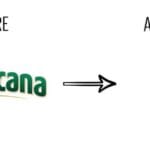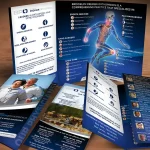In today’s digital age, having a professional website is crucial for any business, including construction companies. A well-designed website can help establish credibility, attract potential clients, and showcase your work. It serves as a virtual storefront that allows potential customers to learn more about your services and get in touch with you. In this article, we will discuss the different elements that make up an effective construction website design and provide tips on how to create a website that stands out from the competition.
Key Takeaways
- A professional website is crucial for construction businesses to establish credibility and attract potential clients.
- Effective construction website design includes clear navigation, strong calls-to-action, and visually appealing elements.
- Choosing the right website platform is important for ensuring ease of use and functionality for both the business and its clients.
- User-friendly navigation is key to keeping visitors engaged and interested in the website’s content.
- Strong calls-to-action encourage visitors to take action and ultimately convert into clients.
Elements of Effective Construction Website Design
a) Clean and Organized Layout: A clean and organized layout is essential for a construction website. It helps visitors navigate through your site easily and find the information they are looking for. Avoid cluttering your website with too much text or images. Use white space effectively to create a visually appealing design. Organize your content into sections or categories to make it easier for visitors to find what they need.
b) High-Quality Images and Videos: Using high-quality images and videos on your construction website is crucial. They help showcase your work and give potential clients a glimpse into what you can offer. Invest in professional photography or videography to capture the best shots of your projects. Make sure the images are clear, well-lit, and properly sized for optimal viewing.
c) Clear and Concise Message: Your website should have a clear and concise message that communicates what sets your construction business apart from the competition. Use compelling headlines and concise copy to convey your unique selling points. Highlight your expertise, experience, and any awards or certifications you have received. Make it easy for visitors to understand what you do and why they should choose you.
Choosing the Right Website Platform for Your Construction Business
When it comes to choosing a website platform for your construction business, there are several options available. Some popular platforms include WordPress, Wix, Squarespace, and Shopify. Each platform has its pros and cons, so it’s important to consider your specific needs and goals before making a decision.
WordPress is a versatile platform that offers a wide range of customization options. It is ideal for businesses that require more control over their website’s design and functionality. However, it may require some technical knowledge to set up and maintain.
Wix and Squarespace are user-friendly platforms that offer drag-and-drop functionality, making it easy to create a professional-looking website without any coding skills. They also provide hosting services, which can be convenient for small businesses. However, they may have limitations in terms of customization options.
Shopify is an e-commerce platform that is specifically designed for online stores. If you plan to sell construction-related products or services online, Shopify may be the best option for you. It offers a range of features for managing inventory, processing payments, and optimizing your online store.
When choosing a website platform, consider factors such as ease of use, customization options, scalability, and cost. It’s also important to choose a platform that is SEO-friendly and allows you to optimize your website for search engines.
Creating a User-Friendly Navigation for Your Construction Website
Having a clear and easy-to-use navigation menu is crucial for any website, including construction websites. A well-organized navigation menu helps visitors find the information they need quickly and easily. Here are some tips on how to create a user-friendly navigation for your construction website:
a) Keep it Simple: Avoid overwhelming visitors with too many menu options. Stick to the essential pages such as Home, About Us, Services, Projects, Testimonials, and Contact Us. If you have additional pages or subcategories, consider using drop-down menus to keep the main navigation menu clean and organized.
b) Use Descriptive Labels: Use clear and descriptive labels for your menu items. Avoid using jargon or industry-specific terms that may confuse visitors. For example, instead of using “Renovations,” use “Home Renovations” or “Kitchen Renovations” to make it clear what services you offer.
c) Prioritize Important Pages: Place the most important pages in the main navigation menu. These are typically the pages that visitors are most likely to visit, such as Services or Projects. Consider using a call-to-action button for your Contact Us page to encourage visitors to get in touch with you.
d) Include a Search Bar: Adding a search bar to your website allows visitors to quickly search for specific information or keywords. This can be especially useful if you have a large website with a lot of content. Make sure the search bar is easily visible and accessible from every page of your website.
Incorporating Strong Calls-to-Action on Your Construction Website
Having strong calls-to-action (CTAs) on your construction website is crucial for converting visitors into leads or customers. A well-designed CTA can encourage visitors to take the desired action, such as requesting a quote, scheduling a consultation, or signing up for a newsletter. Here are some tips on how to create effective CTAs for your construction website:
a) Use Action Words: Use action words or verbs in your CTAs to create a sense of urgency and encourage visitors to take immediate action. For example, instead of using “Learn More,” use “Get Started” or “Request a Quote.”
b) Make it Stand Out: Use contrasting colors, bold fonts, or buttons to make your CTAs stand out from the rest of your website’s design. This helps draw attention to the CTA and makes it more likely that visitors will click on it.
c) Create a Sense of Urgency: Create a sense of urgency with your CTAs by using phrases such as “Limited Time Offer” or “Book Now.” This can help motivate visitors to take action before they miss out on an opportunity.
d) Place CTAs Strategically: Place your CTAs strategically throughout your website, especially on high-traffic pages such as the homepage or services page. Consider using multiple CTAs on a single page to increase the chances of conversion.
The Role of Visuals in Your Construction Website Design
Visuals play a crucial role in the design of your construction website. They help showcase your work, create a visual impact, and engage visitors. Here are some tips on how to choose the right visuals for your construction website:
a) Use High-Quality Images: Invest in professional photography to capture high-quality images of your projects. Avoid using low-resolution or blurry images, as they can make your website look unprofessional. Make sure the images are clear, well-lit, and properly sized for optimal viewing.
b) Include Before and After Photos: Before and after photos are a powerful way to showcase the transformation that your construction projects can achieve. They help potential clients visualize the potential of their own projects and can be a compelling selling point.
c) Incorporate Videos: Videos are an effective way to showcase your work and give visitors a more immersive experience. Consider creating videos that highlight your projects, explain your services, or provide testimonials from satisfied clients. Make sure the videos are high-quality and properly optimized for faster loading times.
d) Optimize for Faster Loading Times: Optimizing your visuals for faster loading times is crucial for providing a seamless user experience. Compress images and videos to reduce file sizes without compromising quality. Use lazy loading techniques to prioritize the loading of visible content first.
Optimizing Your Construction Website for Search Engines
Optimizing your construction website for search engines is crucial for improving its visibility and attracting organic traffic. Here are some tips on how to optimize your website for better search engine rankings:
a) Choose the Right Keywords: Conduct keyword research to identify the keywords that potential clients are using to search for construction services. Use these keywords strategically in your website’s content, meta tags, headings, and image alt tags. Avoid keyword stuffing, as it can negatively impact your website’s rankings.
b) Create High-Quality Content: Creating high-quality and informative content is crucial for improving your website’s search engine rankings. Write blog posts or articles that provide valuable information related to construction, home improvement, or design. Use relevant keywords naturally throughout your content.
c) Optimize Meta Tags: Meta tags are snippets of text that appear in search engine results. Optimize your meta tags by including relevant keywords and writing compelling descriptions that encourage users to click on your website. Use unique meta tags for each page of your website.
d) Build High-Quality Backlinks: Backlinks are links from other websites that point to your website. They are an important ranking factor for search engines. Build high-quality backlinks by reaching out to industry influencers, guest posting on relevant websites, or participating in online forums or communities.
Building Your Construction Website with Mobile Users in Mind
Having a mobile-friendly website is crucial in today’s mobile-first world. With more and more people using smartphones and tablets to browse the internet, it’s important to optimize your construction website for mobile users. Here are some tips on how to make your website mobile-friendly:
a) Use Responsive Design: Responsive design ensures that your website adapts to different screen sizes and devices. It provides a seamless user experience regardless of whether the visitor is using a desktop computer, smartphone, or tablet. Invest in a responsive design or choose a website platform that offers responsive templates.
b) Optimize for Fast Loading Times: Mobile users expect websites to load quickly. Optimize your website for faster loading times by compressing images and videos, minimizing the use of large files or scripts, and leveraging browser caching.
c) Simplify Navigation: Simplify the navigation menu for mobile users. Use a hamburger menu or a collapsible menu to save space and make it easier for visitors to navigate through your website on smaller screens.
d) Test on Multiple Devices: Test your website on multiple devices and screen sizes to ensure that it looks and functions properly. Check for any issues such as broken links, overlapping elements, or slow loading times.
Integrating Social Media into Your Construction Website Design
Integrating social media into your construction website design is important for building brand awareness, engaging with your audience, and driving traffic to your website. Here are some tips on how to integrate social media into your website:
a) Choose the Right Social Media Platforms: Identify the social media platforms that are most relevant to your target audience and industry. For construction businesses, platforms such as Instagram, Facebook, and Houzz can be effective for showcasing your work and connecting with potential clients.
b) Display Social Media Icons: Display social media icons prominently on your website, preferably in the header or footer section. Make sure the icons are clickable and link to your respective social media profiles.
c) Share Social Proof: Incorporate social proof on your website by displaying testimonials or reviews from satisfied clients. You can also showcase your social media followers or the number of likes or shares your content has received.
d) Promote Your Social Media Channels: Encourage visitors to follow or connect with you on social media by promoting your social media channels on your website. Consider offering incentives such as exclusive discounts or access to special content for those who follow you on social media.
Measuring the Success of Your Construction Website and Making Improvements
Measuring the success of your construction website is crucial for understanding how it is performing and making improvements. Here are some tips on how to track your website’s traffic and engagement:
a) Use Web Analytics Tools: Use web analytics tools such as Google Analytics to track important metrics such as website traffic, bounce rate, average session duration, and conversion rate. These tools provide valuable insights into how visitors are interacting with your website.
b) Set Goals and KPIs: Set specific goals and key performance indicators (KPIs) for your website. For example, you may want to increase the number of inquiries or the conversion rate. Track these metrics regularly and make adjustments to your website based on the data.
c) Conduct A/B Testing: A/B testing involves creating two versions of a webpage and testing them against each other to see which one performs better. Test different elements such as headlines, CTAs, or page layouts to determine what resonates best with your audience.
d) Seek Feedback: Ask for feedback from your website visitors or clients to gain insights into their experience. Use online surveys or feedback forms to collect feedback on what they liked or disliked about your website and how it can be improved.
Having a professional website is crucial for construction businesses in today’s digital age. It helps establish credibility, attract potential clients, and showcase your work. By incorporating the elements of effective construction website design discussed in this article, you can create a website that stands out from the competition and drives results. Remember to choose the right website platform, create a user-friendly navigation, incorporate strong calls-to-action, optimize your visuals and content for search engines, build a mobile-friendly website, integrate social media, and measure your website’s success to make improvements. By implementing these tips, you can create a professional and effective website that helps grow your construction business.
If you’re in the construction industry and looking to revamp your website, you may want to check out this informative article on bad web page design and how to avoid it. It provides valuable insights and tips on creating a user-friendly and visually appealing website that will attract potential clients. To learn more, click here.
FAQs
What is construction website design?
Construction website design refers to the process of creating a website that is specifically tailored to meet the needs of a construction company. This includes designing a website that is visually appealing, easy to navigate, and provides relevant information about the company’s services.
Why is construction website design important?
Construction website design is important because it helps construction companies establish an online presence and reach a wider audience. A well-designed website can also help companies showcase their work, build credibility, and generate leads.
What are some key features of a well-designed construction website?
Some key features of a well-designed construction website include a clear and concise navigation menu, high-quality images and videos of completed projects, detailed information about the company’s services, and a contact form or phone number for potential clients to reach out.
What are some common mistakes to avoid in construction website design?
Some common mistakes to avoid in construction website design include using too many flashy graphics or animations, having a cluttered layout, not optimizing the website for mobile devices, and not including enough information about the company’s services.
How can a construction company ensure their website is user-friendly?
A construction company can ensure their website is user-friendly by conducting user testing, simplifying the navigation menu, using clear and concise language, and optimizing the website for mobile devices. It’s also important to regularly update the website with new content and ensure all links are working properly.















0 Comments